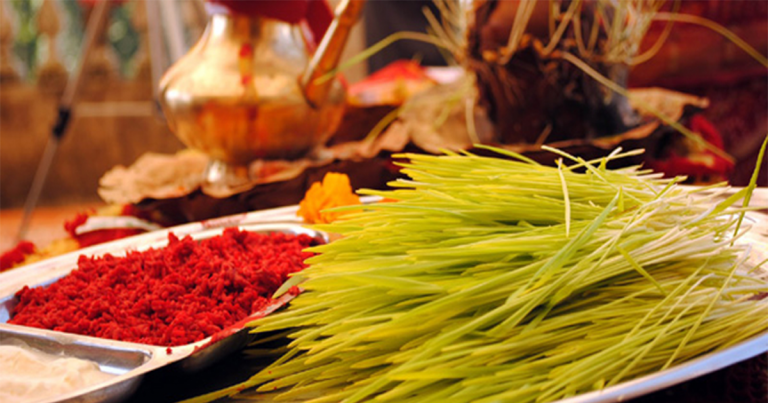
Today is Ghatasthapana – meaning Nepal’s biggest festival has officially begun. Dashain may evoke many memories within us – especially childhood memories – new clothes, visiting relatives, delicious food, amongst others.
For many who are residing abroad – Dashain is a time when we miss Nepal, however, that also does not prevent us from celebrating the festival, does it? The arrival of the festival generates much excitement within us too – families and friends are seen getting together, delicious mutton is cooked; community activities are happening – the spirit of the festival is vibrant within us too. While we do all that, here are a few facts about the festival, which we can share with our non-Nepali friends and are interested to know about Dashain:
Day 1: Ghatapsthapana
Ghatapsthapana is the first day of the festival. It begins with sowing different seeds and placing a Kalasa (Pot) amidst soil block in a separate room where no outsider is allowed to enter and no sunlight can reach, too. The kalasa represents the goddess Durga and is filled with holy water. It is worshiped twice a day in the morning and evening with holy water. On the ninth night of the festival, goddess Durga is believed to reside in the kalasa. After 9 days, the seeds grow up to the size of 4 or 5 inches, thus the sacred grass is known as ‘Jamara’.
Day 7: Phulpati
While other days are equally significant to the festival, the 7th day, i.e. Phulpati (Saptami) is celebrated with great fervor. On this day, Phulpati (an assortment of flowers, leaves and fruits) are taken into people’s homes. The Gurujyuko Platoon, Nepal Army, Nepal Police, high-ranking officials of Armed Police Force and civil service, the Asha Gurja team, music band, panchebaja band, decorated kalsyoulis, along with a procession and cultural pageantry leave Hanuman Dhoka for Jamal with the Phulpati.
Day 8: Maha Astami
Maha Astami, the eight day of the festival, is known as “Kala Ratri”. Kala Ratri is the fiercest of goddess Durga’s manifestation. It is believed that Goddess Durga attained power to beat Maisashur on this day. People make sacrifices of different domestic animals (goats, hens), to appease the goddess Durga. a special ‘Kalaratri’ worship is held at midnight at the ‘Dashain Ghar’ of Hanumandhoka in the capital city.
Day 9: Maha Navami
Maha Navami, one of the most important days of the festival, is the day of triumph. As mentioned in the Markandeya Purana scripture, Goddess Chamunda slained the demon Raktabij on the day of Maha Nawami. The Taleju Temple located at Hanumandhoka in the capital city is also opened today for devotees to pay homage. The temple is opened only on the occasion of Maha Nawami. People of the Newar community today also worship Bhimsen, a Hindu deity, on the occasion of Maha Nawami. On this day artisans, craftsmen, traders, and mechanics worship and offer scapegoats and fowl blood to their tools and equipment, and vehicles in order to avoid any potential accidents in the future.
Day 10: Bijaya Dashami
The tenth day of the festival is Bijaya Dashami – the celebration of the triumph. Elders apply ‘tika’ – a mixture of rice, yogurt and vermillion – and Jamara which is sown on the first day, on the foreheads of younger members of the family as a blessing of progress, success and harmony. This day is considered as the celebration of ‘good over evil’.
Day 15: Kojagrat Purnima
Staring with Ghatasthapana, the festival ends on the full moon day, known as “Kojagrat Purnima”. This is the 15th day or last day of the festival. “Kojagrat Purnima”‘s literal meaning is supposed to be “who is awake?” as there is a superstition that Laxmi, goddess of wealth, descends on the Earth and offers wealth to whoever is awake this night. People spend the last night by playing cards and making merry with friends and family.





